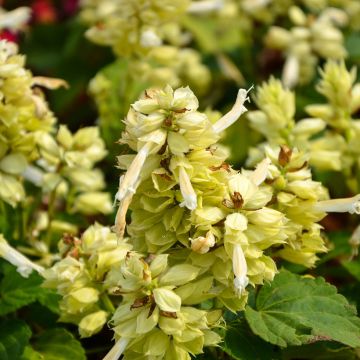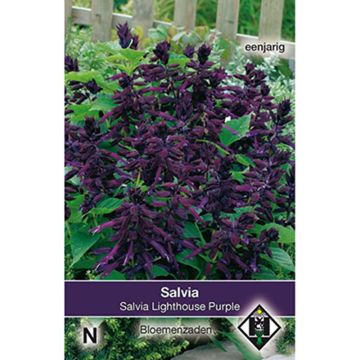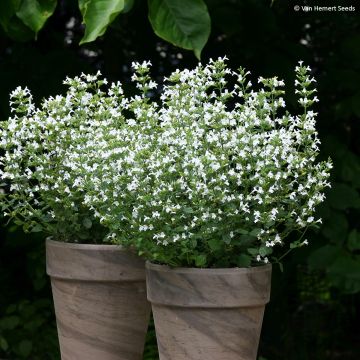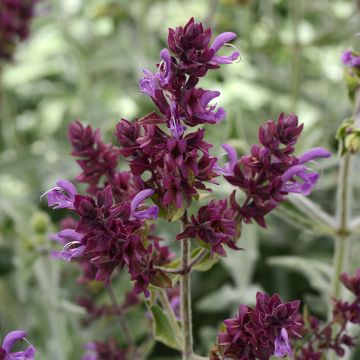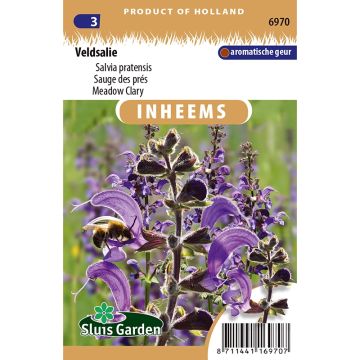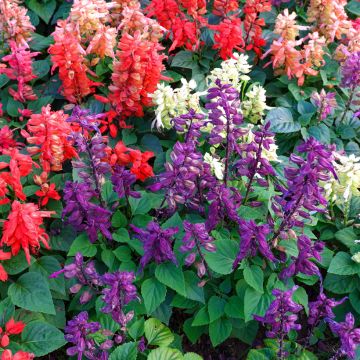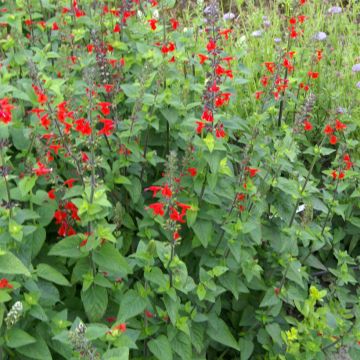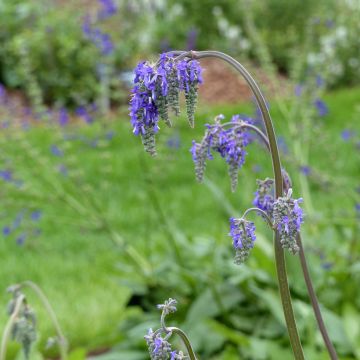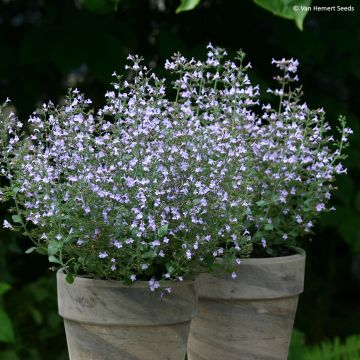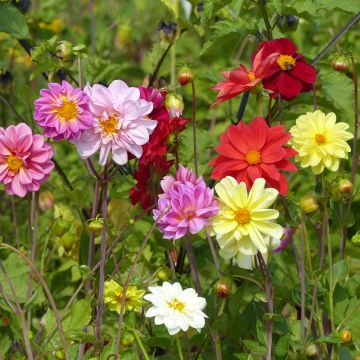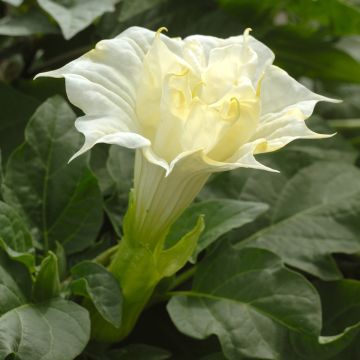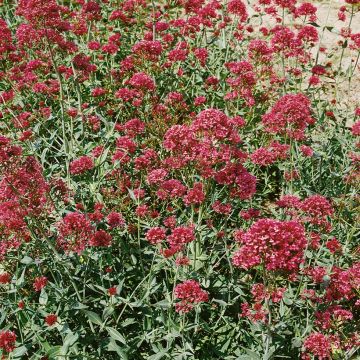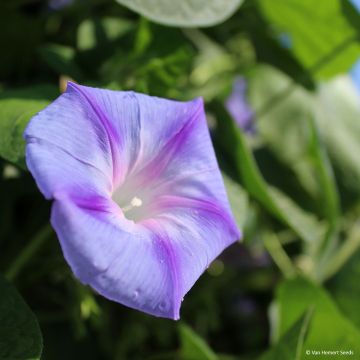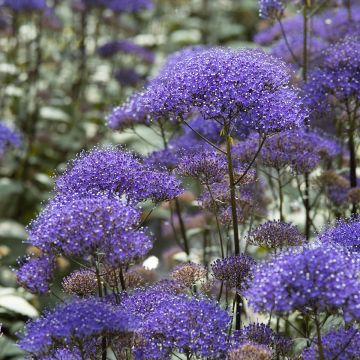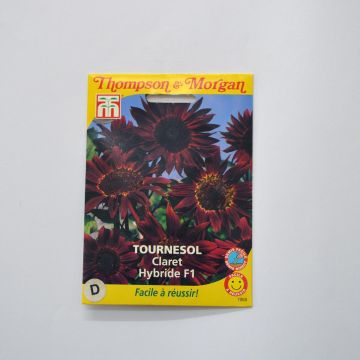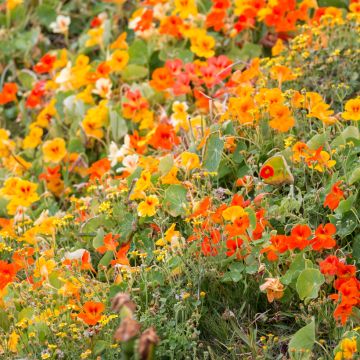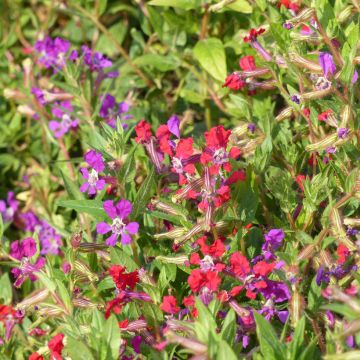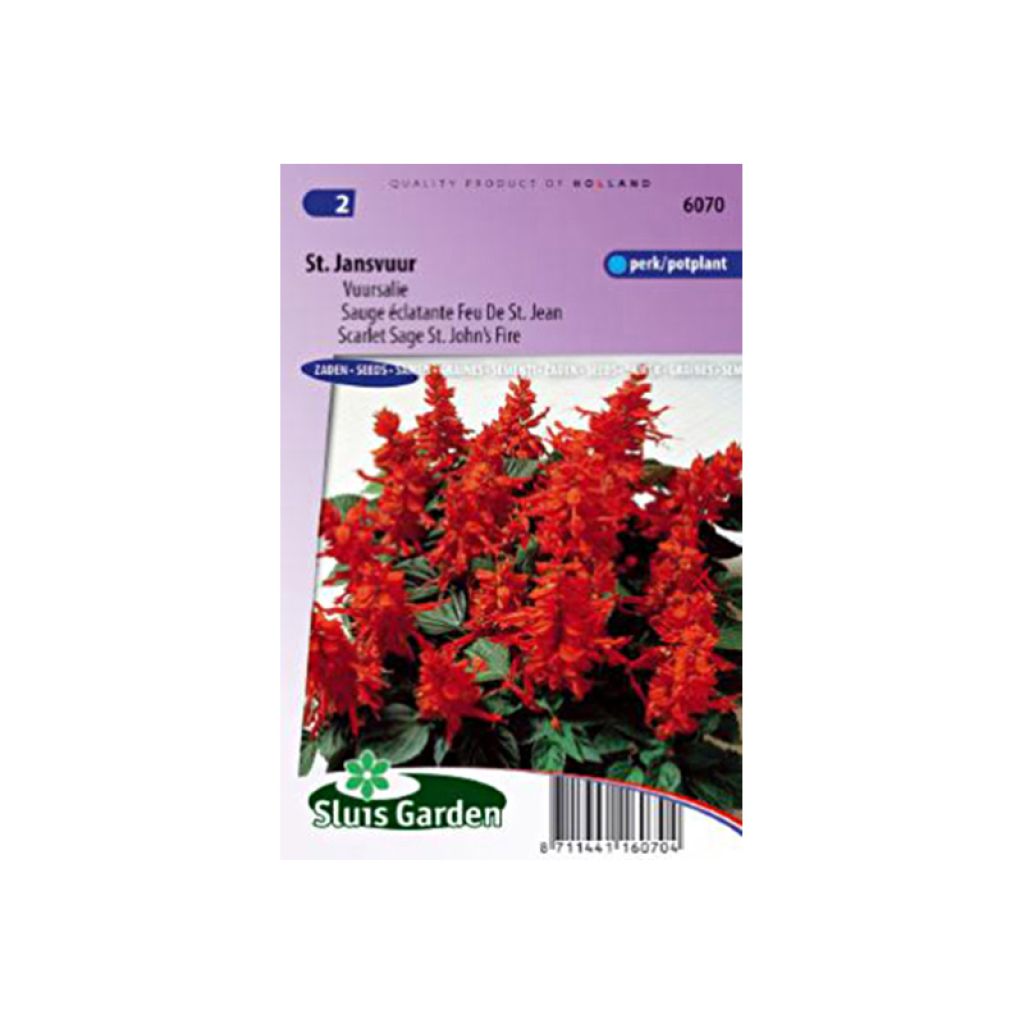

Salvia splendens Scarlet Sage St Johns Fire Seeds - Scarlet Sage
Salvia splendens Scarlet Sage St Johns Fire Seeds - Scarlet Sage
Salvia splendens St John' s Fire
Scarlet Sage
This item cannot be shipped to the selected country
Dispatch by letter from €3.90
Delivery to Corse prohibited
More information
Schedule delivery date,
and select date in basket
This plant carries a 6 months recovery warranty
More information
We guarantee the quality of our plants for a full growing cycle, and will replace at our expense any plant that fails to recover under normal climatic and planting conditions.
Seed-only orders are dispatched by sealed envelope. The delivery charge for seed-only orders is €3.90.
Delivery to Corse prohibited: UE law prohibits the import of this plant from mainland France to Corse as part of the fight against Xylella fastidiosa. Please accept our sincere apologies.
More information
Does this plant fit my garden?
Set up your Plantfit profile →
Description
Perennial in its native Brazil, Salvia splendens St John's Fire also called Scarlet Sage, is grown as an annual in our climates. It features long flowering, dense spikes adorned with scarlet red flowers, held above a magnificent bush of dark green leaves. This old favourite is reliable and vigorous as soon as it emerges as well as being weather-resistant and is a delight for beginner gardeners. Plant in the sun in moist, light, well-drained soil.
Salvia splendens is a herbaceous plant of the family Lamiaceae, native to the hot and humid regions of Brazil, situated between 2000 and 3000 m above sea level. Sometimes it reaches up to 1.30 m in its native habitat but in our climates, it forms an erect tuft of stems measuring 30 cm high and 25 cm wide, in the space of only one season. The quadrangular stems are well-branched and erect. The leaves are oval to lanceolate, toothed, dark green and cover the entire length of the stems. The floral spikes rise above the foliage, from the end of spring to the end of autumn. The tubular flowers are scarlet red, providing a wonderful contrast with the foliage.
Scarlet sage is the queen of beds and has been encountered by everyone at least once, on a detour around a neighbouring garden or in the flowerbeds of public gardens. When used in moderation and planted in small groups that are spread out among other plants with complementary colours (blue Delphinium and silver sagebrush), it adds extra depth to flowerbeds, blooming even when summer perennials go dormant. It also performs very well in pots where it is used to decorate terraces, balconies and window boxes.
Report an error about the product description
Flowering
Foliage
Plant habit
Botanical data
Salvia
splendens
St John' s Fire
Lamiaceae
Scarlet Sage
South America
Other Salvia seeds
Planting and care
Sow in warm conditions, from March to May, in a good quality special seed starting mix. Make sure the soil is moist but not wet and seal in a polyethylene bag until germination which usually takes 15 days at 18-25 °C. Expose seedlings to light as it is beneficial for germination. Transplant when the seedlings are large enough to be handled, in 8 cm pots and allow them to grow in cooler conditions. Gradually acclimatize them to outdoor conditions for 10-15 days before planting out in the garden, after all risk of frost has passed. Space them 30 cm apart in a sunny spot in ordinary soil that his been raked to a fine tilth.
Sowing period
Intended location
-
, onOrder confirmed
Reply from on Promesse de fleurs
Flower seeds
Haven't found what you were looking for?
Hardiness is the lowest winter temperature a plant can endure without suffering serious damage or even dying. However, hardiness is affected by location (a sheltered area, such as a patio), protection (winter cover) and soil type (hardiness is improved by well-drained soil).

Photo Sharing Terms & Conditions
In order to encourage gardeners to interact and share their experiences, Promesse de fleurs offers various media enabling content to be uploaded onto its Site - in particular via the ‘Photo sharing’ module.
The User agrees to refrain from:
- Posting any content that is illegal, prejudicial, insulting, racist, inciteful to hatred, revisionist, contrary to public decency, that infringes on privacy or on the privacy rights of third parties, in particular the publicity rights of persons and goods, intellectual property rights, or the right to privacy.
- Submitting content on behalf of a third party;
- Impersonate the identity of a third party and/or publish any personal information about a third party;
In general, the User undertakes to refrain from any unethical behaviour.
All Content (in particular text, comments, files, images, photos, videos, creative works, etc.), which may be subject to property or intellectual property rights, image or other private rights, shall remain the property of the User, subject to the limited rights granted by the terms of the licence granted by Promesse de fleurs as stated below. Users are at liberty to publish or not to publish such Content on the Site, notably via the ‘Photo Sharing’ facility, and accept that this Content shall be made public and freely accessible, notably on the Internet.
Users further acknowledge, undertake to have ,and guarantee that they hold all necessary rights and permissions to publish such material on the Site, in particular with regard to the legislation in force pertaining to any privacy, property, intellectual property, image, or contractual rights, or rights of any other nature. By publishing such Content on the Site, Users acknowledge accepting full liability as publishers of the Content within the meaning of the law, and grant Promesse de fleurs, free of charge, an inclusive, worldwide licence for the said Content for the entire duration of its publication, including all reproduction, representation, up/downloading, displaying, performing, transmission, and storage rights.
Users also grant permission for their name to be linked to the Content and accept that this link may not always be made available.
By engaging in posting material, Users consent to their Content becoming automatically accessible on the Internet, in particular on other sites and/or blogs and/or web pages of the Promesse de fleurs site, including in particular social pages and the Promesse de fleurs catalogue.
Users may secure the removal of entrusted content free of charge by issuing a simple request via our contact form.
The flowering period indicated on our website applies to countries and regions located in USDA zone 8 (France, the United Kingdom, Ireland, the Netherlands, etc.)
It will vary according to where you live:
- In zones 9 to 10 (Italy, Spain, Greece, etc.), flowering will occur about 2 to 4 weeks earlier.
- In zones 6 to 7 (Germany, Poland, Slovenia, and lower mountainous regions), flowering will be delayed by 2 to 3 weeks.
- In zone 5 (Central Europe, Scandinavia), blooming will be delayed by 3 to 5 weeks.
In temperate climates, pruning of spring-flowering shrubs (forsythia, spireas, etc.) should be done just after flowering.
Pruning of summer-flowering shrubs (Indian Lilac, Perovskia, etc.) can be done in winter or spring.
In cold regions as well as with frost-sensitive plants, avoid pruning too early when severe frosts may still occur.
The planting period indicated on our website applies to countries and regions located in USDA zone 8 (France, United Kingdom, Ireland, Netherlands).
It will vary according to where you live:
- In Mediterranean zones (Marseille, Madrid, Milan, etc.), autumn and winter are the best planting periods.
- In continental zones (Strasbourg, Munich, Vienna, etc.), delay planting by 2 to 3 weeks in spring and bring it forward by 2 to 4 weeks in autumn.
- In mountainous regions (the Alps, Pyrenees, Carpathians, etc.), it is best to plant in late spring (May-June) or late summer (August-September).
The harvesting period indicated on our website applies to countries and regions in USDA zone 8 (France, England, Ireland, the Netherlands).
In colder areas (Scandinavia, Poland, Austria...) fruit and vegetable harvests are likely to be delayed by 3-4 weeks.
In warmer areas (Italy, Spain, Greece, etc.), harvesting will probably take place earlier, depending on weather conditions.
The sowing periods indicated on our website apply to countries and regions within USDA Zone 8 (France, UK, Ireland, Netherlands).
In colder areas (Scandinavia, Poland, Austria...), delay any outdoor sowing by 3-4 weeks, or sow under glass.
In warmer climes (Italy, Spain, Greece, etc.), bring outdoor sowing forward by a few weeks.

































